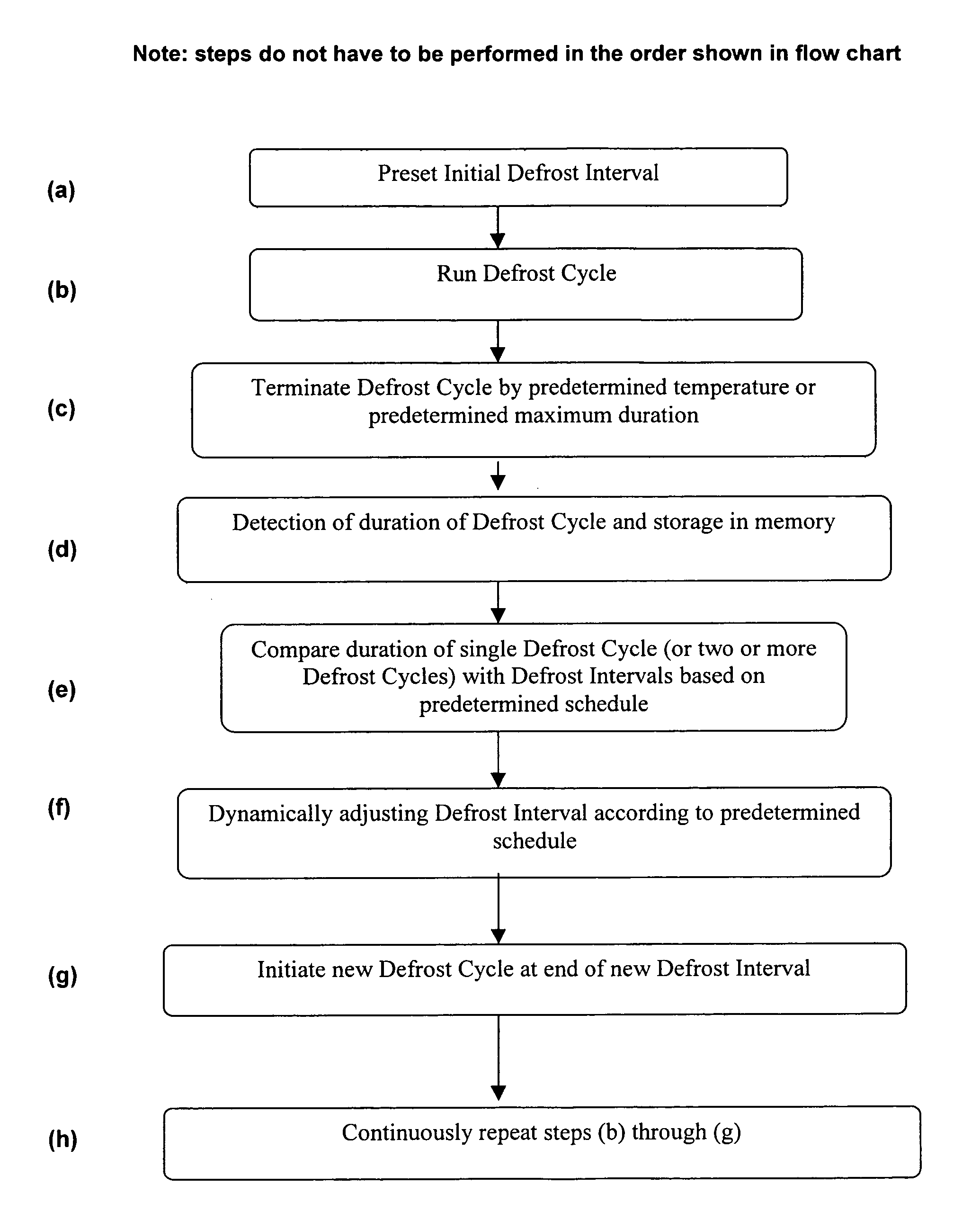Method for automatically adjusting the defrost interval in a heat pump system
a heat pump and automatic adjustment technology, applied in the direction of defrosting, instruments, domestic cooling apparatus, etc., can solve the problems of reducing the performance of degrading the heat exchanger and system performance, heating capacity and efficiency, etc., to reduce the frequency of defrost cycles, eliminate the formation of excessive amounts of frost, and simple and robust
- Summary
- Abstract
- Description
- Claims
- Application Information
AI Technical Summary
Benefits of technology
Problems solved by technology
Method used
Image
Examples
Embodiment Construction
[0018]The present disclosure provides a method to dynamically and automatically adjust the interval of time between defrost cycles in a heat pump system. The method involves tracking the time duration of the previous defrost cycle (or cycles) and then dynamically adjusting the length of time before the next defrost cycle is initiated.
[0019]During a defrost cycle, also called a defrost routine, the heat that flows into the heat exchanger coil is first consumed in melting the frost, if any, that has previously built up on the coil. Once the frost is cleared, the heat quickly increases the temperature of the coil. The defrost control, upon sensing this increased coil temperature, terminates the defrost cycle. The time duration of a defrost cycle, therefore, primarily depends on the amount of previously accumulated frost on the coil. Greater amounts of accumulated frost result in longer defrost cycles. For example, in typical residential heat pump systems, defrost cycles range between o...
PUM
 Login to View More
Login to View More Abstract
Description
Claims
Application Information
 Login to View More
Login to View More - R&D
- Intellectual Property
- Life Sciences
- Materials
- Tech Scout
- Unparalleled Data Quality
- Higher Quality Content
- 60% Fewer Hallucinations
Browse by: Latest US Patents, China's latest patents, Technical Efficacy Thesaurus, Application Domain, Technology Topic, Popular Technical Reports.
© 2025 PatSnap. All rights reserved.Legal|Privacy policy|Modern Slavery Act Transparency Statement|Sitemap|About US| Contact US: help@patsnap.com


